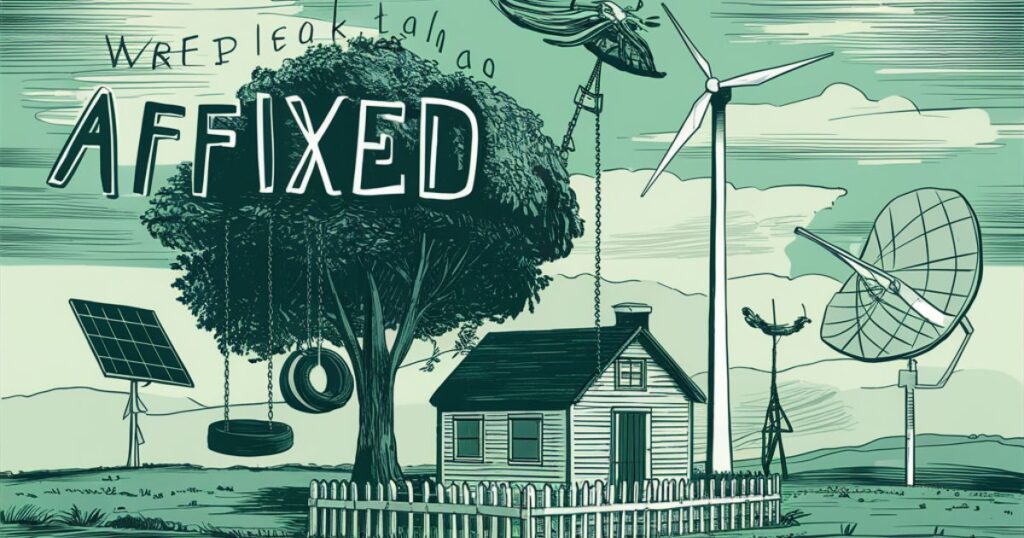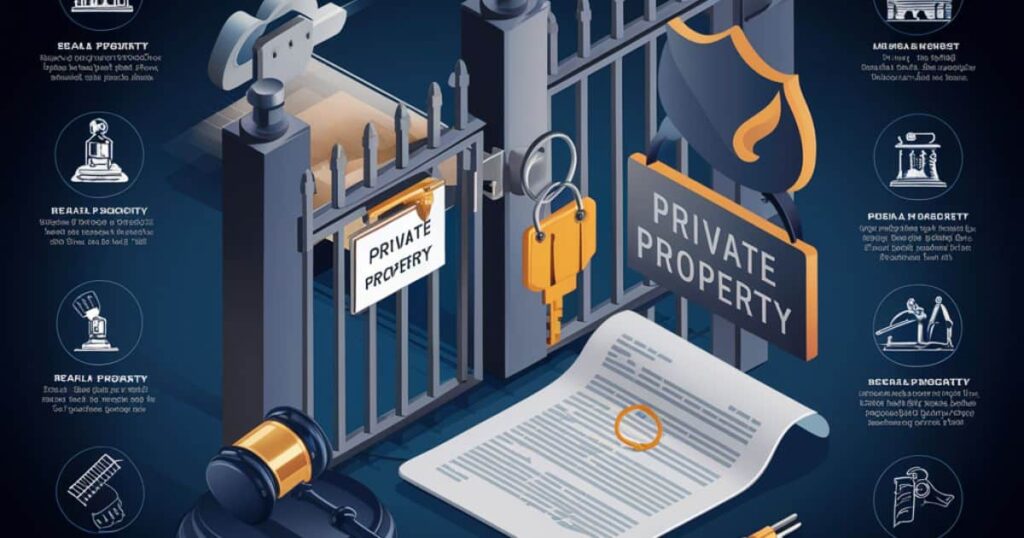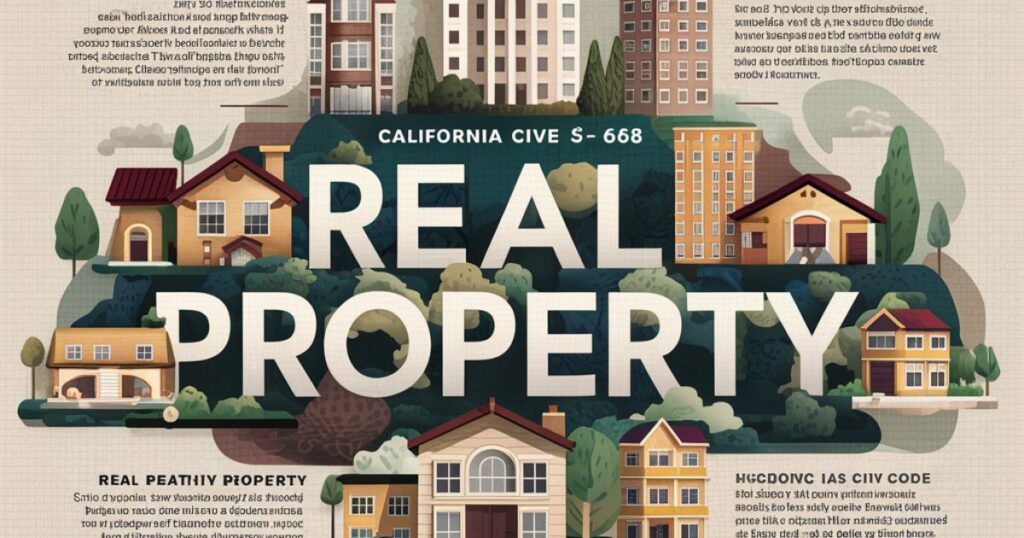Understanding the legal concept of “real property” is crucial, especially for homebuyers, sellers, and property owners in California. As defined in California’s Civil Code § 658, real property refers to land and anything permanently attached or “affixed” to that land, such as houses or buildings.
This distinction between real and personal property dates back to the influential English legal scholar Sir William Blackstone in the 1700s.
The Legal Definition of Real Property
According to California’s Civil Code § 658, the definition of real property is:
Real property, or immovable property, is defined as land, along with anything permanently affixed to the land, such as buildings, structures, or improvements.
In simpler terms, real property encompasses land itself and anything firmly attached or connected to that land in a permanent manner.
This includes residential homes, commercial buildings, trees or plants rooted in the ground, and any other structures or additions that cannot be easily moved or detached.
Tracing the Origins to Blackstone
The concept of real property can be traced back to the renowned English jurist Sir William Blackstone, who significantly shaped our modern understanding of property law.
Blackstone essentially derived the differences between real and personal property way back in 1765. He defined real property as encompassing “lands, tenements, and hereditaments,” while anything not falling into those categories was considered personal property.
Remarkably, Blackstone’s formulations of property law remain highly influential, serving as the foundation for many states’ property laws, including California.
In the case of [Callahan v. Martin (1935) 3 Cal.2d 110, 118], the court referenced Blackstone’s work, noting that real property is “coextensive with lands, tenements, and hereditaments.”
Read this Post: FIRST HOME GUARANTEE – A POTENTIAL SOLUTION FOR US BUYERS
What Qualifies as “Affixed” to Land?

To further clarify what constitutes real property, California’s Civil Code Section 660 defines when a thing is deemed “affixed” to land:
A thing is deemed to be affixed to land when it is attached to it by its roots, such as in the case of trees, or permanently resting upon it, as in the case of buildings.
This definition helps distinguish real property from personal property by specifying the level of permanent attachment required.
For example, a house or commercial building firmly resting on the land would be considered real property, while a movable shed or trailer would not.
Examples of Real Property
Based on the legal definitions, some common examples of real property in California include:
- Residential homes and buildings
- Commercial real estate, such as office spaces or retail stores
- Vacant land, farmland, or undeveloped lots
- Permanent additions or fixtures, such as in-ground pools, sheds, or garages
- Trees, crops, or other plants rooted in the land
Differentiating Real vs. Personal Property
In contrast to real property, personal property is defined in California’s Civil Code § 663 as “every kind of property that is not real property.”
This broad category encompasses movable, tangible items as well as intangible assets like patents or copyrights.
Some examples of personal property include:
- Vehicles (cars, boats, motorcycles)
- Furniture and appliances (unless permanently built-in)
- Electronics, jewelry, clothing, and other personal belongings
- Investment accounts, stocks, and intellectual property rights
Distinguishing between real and personal property is particularly important for homebuyers and sellers. It determines what is included in the sale of a property and what the seller may retain as separate personal property.
In a unique case, the [Fourth District Court of Appeal] ruled that “electricity” is considered tangible personal property for the purposes of sales tax laws in California ([Searles Valley Minerals Operations, Inc. v. State Bd. Of Equalization (2008) 160 Cal.App.4th 514, 521]).
While this may seem counterintuitive, since electricity is not land or affixed to land, it must be classified as personal property. This is based on the legal definitions.
In California, crops and other fruits grown on a piece of land are considered part of the real property. They are deemed affixed to the land through their roots.
When Personal Property Becomes Real Property

In certain situations, personal property can transform into a part of the real property it is attached to. It assumes the legal status of real property.
This often occurs in rental contexts, where tenants make installations or improvements to the property they are renting.
For example, let’s say a tenant installs new cabinets, countertops, or fixtures in their rented space. While these items started as separate personal property, a court may determine that they have become legally affixed to the real property based on the following factors:
- The manner of annexation: How permanently the items were installed or attached.
- The adaptation to the property’s use: How integral the additions are to the functional use of the real property.
- The intention behind the annexation: Whether the tenant intended for the installations to become a permanent part of the property.
In the case of [Escondido Union School Dist. v. Casa Suenos De Oro (205) 129 Cal.App.4th 944, 965], the court affirmed that personal property can become a part of real property under certain circumstances.
Common examples where personal property may legally transform into real property include:
- Toilets, sinks, and other plumbing fixtures
- Built-in cabinets, shelving, or closet systems
- Hardwood flooring or carpeting installations
Freestanding furniture or appliances that can be easily moved would likely remain classified as personal property. This classification would apply even in a rental situation.
Additionally, in the case of [Aljabban v. Fontana Indoor swap Meet, Inc. (2020) 54 Cal.App.5th 482, 500], the court outlined the three factors listed above as crucial in determining whether personal property becomes a fixture (and thus real property) or remains separate personal property.
The Unique Case of Crops
One interesting aspect of real property in California involves crops and agricultural produce. As mentioned earlier, any crops or fruits grown on a piece of land are considered part of the real property. They are deemed affixed to the land through their roots.
This concept becomes particularly relevant in situations where landowners grant others the right to come onto their property and harvest crops. This is common in the vineyards of Napa.
This arrangement is known as a “profit a prendre,” which is an archaic legal term meaning someone has a right to remove a part of the substance of the land.
In the case of [Kennecott Corp. v. Union Oil Co. (1987) 196 Cal.App.3d 1179], the court acknowledged that a profit a prendre is a unique interest in real property, as it essentially grants an easement or right to extract a portion of the land’s produce.
Protecting Your Real Property Rights

Understanding the legal distinctions between real and personal property is crucial for protecting your rights as a property owner, buyer, or seller in California.
These nuanced concepts can significantly impact ownership, partition actions, and co-ownership disputes.
That’s why it’s highly recommended to consult with an experienced real estate attorney, especially in complex situations involving property divisions or disputes.
At [Underwood Law Firm], their legal experts specialize in partition actions and resolving co-ownership challenges, helping clients navigate these intricate real property laws.
Don’t risk navigating these complexities alone. By seeking guidance from knowledgeable attorneys, you can ensure your real property rights are fully protected and any potential issues are addressed proactively.
Conclusion
In summary, real property in California encompasses land and anything permanently affixed or attached to that land, such as buildings, structures, or improvements, as defined in Civil Code § 658.
This legal concept traces back to the influential work of Sir William Blackstone and remains highly relevant today, particularly in real estate transactions and property ownership disputes.
By understanding the nuances of what constitutes real property, the factors that determine when personal property becomes real property, and unique cases like crops and profits a prendre, you can better navigate the complex world of property law in California.
Remember, if you have any questions or concerns related to real property rights, don’t hesitate to reach out to the experienced attorneys at [Underwood Law Firm].
Their expertise in partition actions and co-ownership issues can provide you with the guidance and protection you need.

Ava, boasting five years in home blogging, shares expertise in domestic living. With a sharp eye and passion for details, she navigates home decor and lifestyle intricacies effortlessly.







